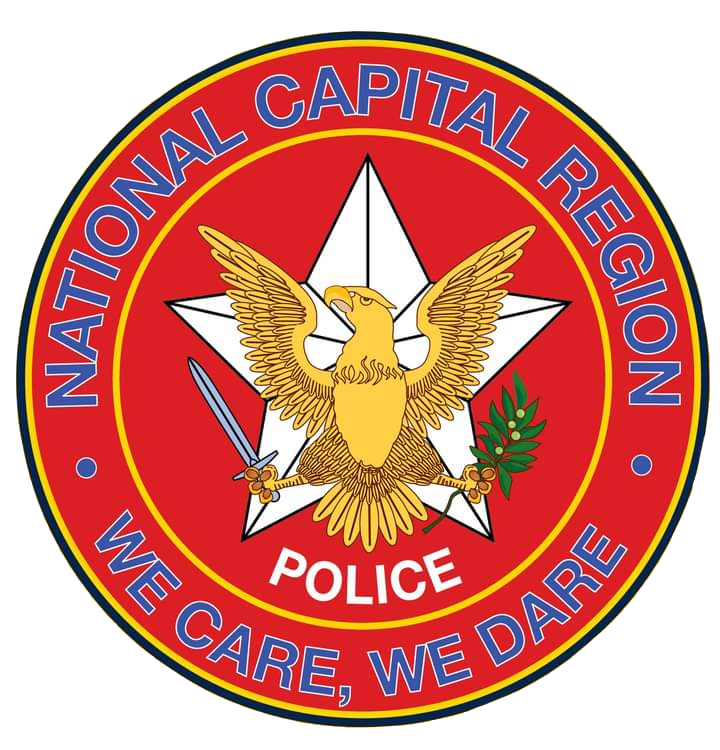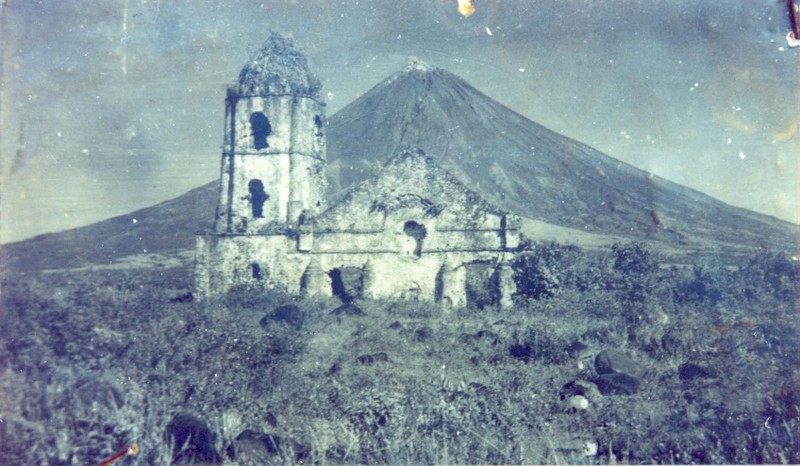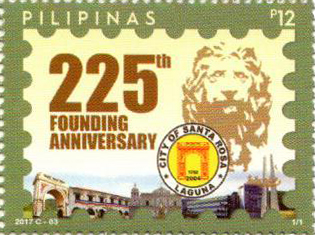|
Philippine Drug Enforcement Agency
The Philippine Drug Enforcement Agency (PDEA, ; Filipino: ''Ahensiya ng Pilipinas sa Pagpapatupad ng Batas Laban sa Bawal na Gamot'') is the lead anti-drug law enforcement agency, responsible for preventing, investigating and combating any dangerous drugs, controlled precursors and essential chemicals within the Philippines. The agency is tasked with the enforcement of the penal and regulatory provisions of Republic Act No. 9165 (R.A. 9165), otherwise known as the Comprehensive Dangerous Drugs Act of 2002. PDEA is the implementing arm of the Dangerous Drugs Board (DDB). The DDB is the policy-making and strategy-formulating body in the planning and formulation of policies and programs on drug prevention and control. PDEA and DDB are both under the supervision of the Office of the President of the Philippines. History For thirty years, the Republic Act No. 6425, or the Dangerous Drugs Act of 1972, had been the backbone of the drug law enforcement system in the Philippi ... [...More Info...] [...Related Items...] OR: [Wikipedia] [Google] [Baidu] |
Philippine National Police
The Philippine National Police (PNP; ) is the national police force of the Philippines. Its national headquarters is located at Camp Crame in Bagong Lipunan ng Crame, Quezon City. Currently, it has approximately 228,000 personnel to police a population in excess of 100 million. The agency is administered and controlled by the National Police Commission (Philippines), National Police Commission and is part of the Department of the Interior and Local Government (DILG). Local police officers are operationally controlled by city or municipal mayors. DILG, on the other hand, organizes, trains and equips the PNP for the performance of police functions as a police force that is national in scope and civilian in character. The PNP was formed on January 29, 1991, when the Philippine Constabulary and the Integrated National Police were merged pursuant to Republic Act 6975 of 1990. [...More Info...] [...Related Items...] OR: [Wikipedia] [Google] [Baidu] |
Gloria Macapagal Arroyo
Maria Gloria Macaraeg Macapagal-Arroyo (; born April 5, 1947), often referred to as PGMA or GMA, is a Filipino academic and politician who served as the 14th president of the Philippines from Presidency of Gloria Macapagal-Arroyo, 2001 to 2010. She is the longest-serving president since Ferdinand Marcos. Before her presidency, she was the 10th vice president of the Philippines from 1998 to 2001 under President Joseph Estrada, becoming the first female vice president. She was also a Senate of the Philippines, senator from 1992 to 1998. After her presidency, she was elected as the House of Representatives of the Philippines, representative of Pampanga's 2nd congressional district, Pampanga's 2nd district in 2010 and continues to serve in this role. She also served as the Speaker of the House of Representatives of the Philippines, speaker of the House from 2018 to 2019, and as Deputy Speaker of the House of Representatives of the Philippines, deputy speaker from 2016 to 2017 and 20 ... [...More Info...] [...Related Items...] OR: [Wikipedia] [Google] [Baidu] |
Legazpi, Albay
Legazpi (, American Spanish: , European Spanish: ), officially the City of Legazpi (; ), is a Component City, component city and capital of the Provinces of the Philippines, province of Albay, Philippines. According to the 2020 census, it has a population of 209,533. Legazpi is the regional center and largest city of the Bicol Region and in Albay, in terms of population."DILG Regional Office No. 5 Directory" . Bicol Region Official website. It is the region's center of tourism, education, health services, commerce and transportation in the Bicol Region. The city is applying for a Highly Urbanized City (HUC). The city is composed of two districts, Legazpi Port and the Old Albay District. Mayon, Mayon Volcano, one of the Philippines' most popular ic ... [...More Info...] [...Related Items...] OR: [Wikipedia] [Google] [Baidu] |
Oriental Mindoro
Oriental Mindoro (), officially the Province of Oriental Mindoro (), is a province in the Philippines located on the island of Mindoro under Mimaropa region in Luzon, about southwest of Manila. The province is bordered by the Verde Island Passage and the rest of Batangas to the north, by Marinduque, Maestre de Campo (or known as ''Sibale'' but official name is ''Concepcion'') Island, Tablas Strait and the rest of Romblon to the east, by Semirara and the rest of Caluya Islands, Antique to the south, and by Occidental Mindoro to the west. Its provincial capital Calapan, the only city in the island, is the most-populous in the province, and Mimaropa's regional center. Oriental Mindoro is touted as the country's emerging eco-tourism destination. In 2005, the Philippines was found to be the center of marine fish biodiversity and the home of the most diverse marine ecosystem in the world, by American biologists Kent Carpenter and Victor Springer. Most of the endemic species ... [...More Info...] [...Related Items...] OR: [Wikipedia] [Google] [Baidu] |
Calapan
Calapan, officially the City of Calapan (), is a component city and the capital of the province of Oriental Mindoro, Philippines. According to the 2020 census, it has a population of 145,786 people making it the most populous in Oriental Mindoro and second in the entire Mindoro Island after San Jose in Occidental Mindoro. The city is also the regional center of Mimaropa region, as well as its second biggest city (after Puerto Princesa). The city serves as the gateway to the Oriental Mindoro province with the implementation of the Strong Republic Nautical Highway (SRNH) an integrated ferry project of then President Gloria Macapagal Arroyo that extends further to the southern part of the Philippines. The Calapan City Seaport is the largest and busiest seaport on Mindoro Island, which is just 45 minutes away by ferry boats and roll-on/roll-off (RORO) ships to and from Batangas City International Seaport. Calapan is the only city in Mindoro island and it is one of two ci ... [...More Info...] [...Related Items...] OR: [Wikipedia] [Google] [Baidu] |
Laguna (province)
Laguna , officially the Province of Laguna (), is a Provinces of the Philippines, province in the Philippines located in the Calabarzon Regions of the Philippines, region in Luzon. Its capital is Santa Cruz, Laguna, Santa Cruz while its largest city is the Calamba, Laguna, City of Calamba (the regional center of Calabarzon) and the province is situated southeast of Metro Manila, south of the province of Rizal (province), Rizal, west of Quezon, north of Batangas and east of Cavite. Laguna hugs the southern shores of Laguna de Bay, the largest lake in the country. As of the 2020 census, the total population of Laguna is 3,382,193. Among all 82 provinces in the Philippines, Laguna accounted for the largest share (5%) of the national Gross Domestic Product (GDP) with a total of Php 990.69 billion in 2022. Laguna is notable as the birthplace of José Rizal, the country's ''de facto'' national hero. It has numerous natural and cultural attractions such as Cavinti Falls aka Pagsanjan ... [...More Info...] [...Related Items...] OR: [Wikipedia] [Google] [Baidu] |
Santa Rosa, Laguna
Santa Rosa, officially the City of Santa Rosa (), is a Cities of the Philippines#Legal classification, component city in the Provinces of the Philippines, province of Laguna (province), Laguna, Philippines. According to the 2020 census, its population was 414,812 people. It is the second largest local government unit in Laguna after Calamba, Laguna, Calamba. On August 28, 2019, President Rodrigo Duterte signed Republic Act No. 11395, which separated the city from the Laguna's 1st congressional district, province's first district and granted the city its Santa Rosa's at-large congressional district, own congressional district to elect a representative in 2022 Philippine general election, 2022. The city later gained its own representation in the Laguna Provincial Board to elect two members separately starting in 2025 Laguna local elections, 2025. Santa Rosa is derived from Spanish language, Spanish for Saint Rose of Lima, its patron saint to whom it is consecrated to. The town w ... [...More Info...] [...Related Items...] OR: [Wikipedia] [Google] [Baidu] |
City Of San Fernando, Pampanga
A city is a human settlement of a substantial size. The term "city" has different meanings around the world and in some places the settlement can be very small. Even where the term is limited to larger settlements, there is no universally agreed definition of the lower boundary for their size. In a narrower sense, a city can be defined as a permanent and densely populated place with administratively defined boundaries whose members work primarily on non-agricultural tasks. Cities generally have extensive systems for housing, transportation, sanitation, utilities, land use, production of goods, and communication. Their density facilitates interaction between people, government organizations, and businesses, sometimes benefiting different parties in the process, such as improving the efficiency of goods and service distribution. Historically, city dwellers have been a small proportion of humanity overall, but following two centuries of unprecedented and rapid urbanization, more ... [...More Info...] [...Related Items...] OR: [Wikipedia] [Google] [Baidu] |
Cagayan
Cagayan ( ), officially the Province of Cagayan (; ; ; isnag language, Isnag: ''Provinsia nga Cagayan''; ivatan language, Ivatan: ''Provinsiya nu Cagayan''; ; ), is a Provinces of the Philippines, province in the Philippines located in the Cagayan Valley Regions of the Philippines, region, covering the northeastern tip of Luzon. Its capital is Tuguegarao, the largest city of that province as well as the regional center of Region 2 (Cagayan Valley). It is about northwest of Manila, and includes the Babuyan Islands to the north. The province borders Ilocos Norte and Apayao to the west, and Kalinga (province), Kalinga and Isabela (province), Isabela to the south. Cagayan was one of the early provinces that existed during the Spanish colonial period. Called ''La Provincia de Cagayan'', its borders essentially covered the entire Cagayan Valley, which included the present provinces of Isabela (province), Isabela, Quirino (province), Quirino, Nueva Vizcaya, Batanes and portions of Ka ... [...More Info...] [...Related Items...] OR: [Wikipedia] [Google] [Baidu] |
Tuguegarao City
Tuguegarao ( or ), officially the City of Tuguegarao (; ; ; ), is a 2nd class component city and capital of the province of Cagayan, Philippines. According to the 2020 census, it has a population of 166,334 people, making it the most populous city in Cagayan Province, Cagayan Valley and Northeastern Luzon. A major urban center and primary growth center in the Northeastern Luzon, it is the regional center of Cagayan Valley and also its regional institutional and administrative center. The city is a convergence area for the provinces of Cagayan, Kalinga, Apayao and northern Isabela and one of the fast-emerging cities in the Philippines. Dubbed as the "Gateway to the Ilocandia and the Cordilleras," the city is located on the southern border of the province where the Pinacanauan River empties into the Cagayan River. It is surrounded by the Sierra Madre Mountains to the east, Cordillera Mountains to the west, and the Caraballo Mountains to the south. The highest temperature ... [...More Info...] [...Related Items...] OR: [Wikipedia] [Google] [Baidu] |
La Union
La Union (), officially the Province of La Union (; ; ; ; ; ), is a coastal province in the Philippines situated in the Ilocos Region on the island of Luzon. The province's capital, the San Fernando, La Union, City of San Fernando, is the most populous city in La Union and serves as the regional center of the Ilocos Region. Bordered by Ilocos Sur to its north, Benguet to its east, and Pangasinan to its south, with the West Philippine Sea to the west, La Union is located 273 kilometers (170 miles) north of Metro Manila and 57 kilometers (35 miles) northwest of Baguio, Baguio City. The province spans an area of 1,497.70 square kilometers (578.27 square miles). As of the 2020 census, La Union had a population of 822,352, resulting in a density of 550 inhabitants per square kilometer or 1,400 persons per square mile. The province had 538,730 registered voters as of 2022. The province official language is Ilocano language, Iloco (Ilocano), as declared by the provincial government of ... [...More Info...] [...Related Items...] OR: [Wikipedia] [Google] [Baidu] |
San Fernando City, La Union
San Fernando, officially the City of San Fernando (; ), is a component city and the capital of the province of La Union, Philippines. It serves as the regional and administrative center of the Ilocos Region. The city also functions as a hub for trade and commerce in northern Luzon and as a center for the culture and heritage of Ilocandia. According to the 2020 census, it has a population of 125,642 with 76,555 registered voters as of 2022. The City of San Fernando is a coastal city facing the West Philippine Sea to the west and bordered by the Cordillera Central mountain range to the east. It consists of 59 barangays and has a total land area of 105.26 square kilometers. The city's majority ethnolinguistic group are the Ilocano people who speak Iloco language, as the city has historically been an Ilocano stronghold. It is one of two capital cities in the Philippines named San Fernando, the other being San Fernando, Pampanga. As the regional center of the Ilocos Region ... [...More Info...] [...Related Items...] OR: [Wikipedia] [Google] [Baidu] |










